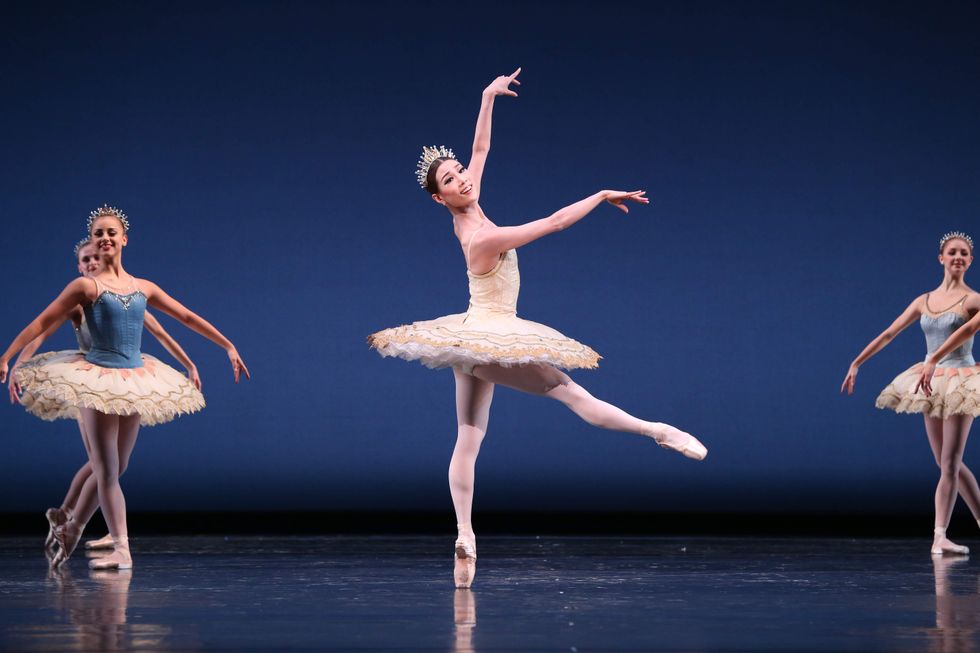Perfect Decay
Walter de Maria's Trilogies at The Menil perfectly explores the tension betweenperfection and decay
 Walter De Maria, Bel Air Trilogy, stainless steel rod with 1955 Chevrolet BelAir two-tone hardtops, 2000-2011, courtesy Gagosian GalleryPhoto by Hester + Hardaway Photographers Fayetteville, Texas
Walter De Maria, Bel Air Trilogy, stainless steel rod with 1955 Chevrolet BelAir two-tone hardtops, 2000-2011, courtesy Gagosian GalleryPhoto by Hester + Hardaway Photographers Fayetteville, Texas Walter de Maria, Statement Series: Yellow Painting (The Color Men Choose WhenThey Attack the Earth), 1968, oil on canvas with stainless steel plaque,courtesy The Menil Collection, Houston, purchase, with funds contributed by theEstate of Mary Kathryn Lynch KurtzPhoto by George Hixson
Walter de Maria, Statement Series: Yellow Painting (The Color Men Choose WhenThey Attack the Earth), 1968, oil on canvas with stainless steel plaque,courtesy The Menil Collection, Houston, purchase, with funds contributed by theEstate of Mary Kathryn Lynch KurtzPhoto by George Hixson Walter de Maria, Chanel Series: Circle, Square, Triangle, 1972, brushedstainless steel, courtesy The Menil Collection, HoustonPhoto by Hickey-Robertson, Houston
Walter de Maria, Chanel Series: Circle, Square, Triangle, 1972, brushedstainless steel, courtesy The Menil Collection, HoustonPhoto by Hickey-Robertson, Houston Walter De Maria, Bel Air Trilogy, 2000-2011 (detail), courtesy Gagosian GalleryPhoto by Robert McKeever
Walter De Maria, Bel Air Trilogy, 2000-2011 (detail), courtesy Gagosian GalleryPhoto by Robert McKeever
Things come in threes, especially for artists.
Just as red, blue, and yellow are fundamental colors, so, too, are the circle, square, and triangle fundamental shapes. Throw in three pristine 1955 Bel Air Chevrolets, and you have Walter De Maria: Trilogies. The show represents De Maria's first major American museum exhibition and runs from Sept. 16 to Jan. 8, 2012 at The Menil Collection.
De Maria hails from Albany, Calif., but lives and works in New York. His half-century of contribution to the visual arts has impacted a variety of disciplines from minimalism and conceptual art to earth and land art. Take, for instance, Lightning Field (1977), a long-term installation in Carlton County, N.M. Commissioned by the Dia Art Foundation, Lightning Field is an overwhelming experience. Four hundred stainless steel posts form a massive grid that attracts and conducts lightning. How small people are next to such awesome and concentrated forces.
This show begins, appropriately enough, in the capacious Menil lobby, where three massive works, The Statement Series, utterly transform the space. I’ve always loved this part of the museum, and while I’ve often admired the works selected to hang around the heptagonal ottoman, none have seemed to have such impact. Three large, unframed painted canvases draw viewers in with their near-but-not-quite primary colors and their silvery plaques, each sporting a different statement: “Yes. PEACE. Yes” (2011) on blue and “No. WAR. No” on red (2011), both made specifically to pair with the larger yellow “The Color Men Choose When They Attack the Earth” (1968).
The grouping is powerful, even as the more recent statements seem less odd and significant that the original work. A museum is always about looking at art and watching other people looking at art. The Statement Series transform viewers into some new kind of prismatic community as they pass before these striking canvases. Looking closely at The Statement Series, you begin to notice a defining feature of De Maria’s work, which is that it is a profound meditation on perfection and decay. The colored canvases appear pristine from a distance, when the eye happily drowns in color. As you approach, what becomes apparent are not so much imperfections or errors, but the texture of actual life, with its bumps and irregularities.
I thought about the illusion of the pristine as I wandered down to the far gallery where Channel Series: Circle, Square, Triangle and Bel Air Trilogy occupy the space that was so recently filled with a shock of white for Upside Down: Arctic Realities. I remembered, too, the wonderful Maurizio Cattelan’s All in the same gallery, where bodies under sheets composed of carrara marble seem to be frozen in either slumber or the big sleep of death.
De Maria is also pristine, but in a different way. Viewers may be familiar with The Channel Series, which has appeared in these galleries before. The sculpture is exactly what it says it is: a series of three brushed stainless steel geometric shapes, each with a channel in which a silver ball sits. There’s something cold and perfect about The Channel Series, if less impressive that De Maria’s other works. It’s a sculpture that begs for motion while refusing it. I think of sound when I see these works, and when I take in the group, I wonder if the arrow is in fact pointing somewhere. The Channel Series doesn’t move, speak, or point, really, which is perhaps the point.
The Bel Air Trilogy, the third work composed of three items, is also exactly what it says. Three gorgeously restored 1955 Chevrolet Bel Airs, each with a two-tone hard top, sit in the midst of the gallery. Neither motion nor sound disturbs them, though it is hard not to imagine a revving engine in anticipation of a drive that will never be taken. You want to reach out and touch the gorgeous red paint, but a strip of black molding on the floor (and a series of insistent museum guards) prevent you. De Maria seems to enjoy a certain game of giving and taking away. Even more, he enjoys the idea that pristine objects — a canvas of color, a perfect geometric shape, a restored car — are also already (or about to be) ruined objects.
The tension between perfection and damage is profound in De Maria’s work You might not see time eating away at the metal and paint of the Bel Air, but each windshield is bisected by a steel rod, each one a different geometric shape: square, circle and triangle. When you see a steel rod through a car, it’s hard not to imagine wreckage, broken glass and damaged bodies. None appear. The windshield is hardly disturbed by the rod. If you were sitting in the car when the rod came through the glass, it might only brush your hair going past.
There’s something talismanic in Walter de Maria:Trilogies, as if the ruin of time and creaturely life might be warded off with the right word, ritual, or shape.
Three sets of three. For your own sake, don’t miss any of them.





